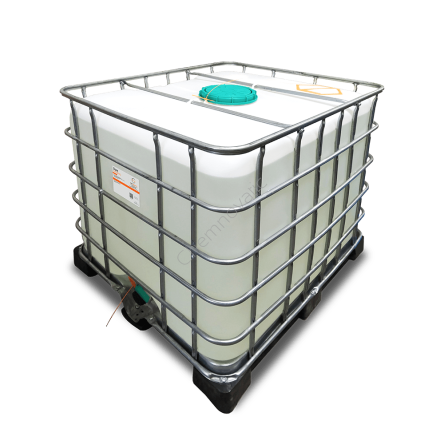Sodium Hydroxide
- Aňadir opinión:
- Fabricante : Chemnovatic
-
Disponibilidad :
 Disponible
Disponible
Sodium hydroxide, soda lye, caustic soda, NaOH – an inorganic chemical compound from the hydroxide group, belonging to the strongest bases. In solid form, it is a white substance with a crystalline structure.
Properties of Sodium Hydroxide
It is hygroscopic and readily combines with carbon dioxide from the air (forming a coating of sodium carbonate), so it should be stored in tightly sealed vessels. In water it dissolves very well, giving off considerable amounts of heat and forming highly corrosive sodium lye – a colorless, odorless and non-flammable liquid that reacts with acids, non-metal oxides and amphoteric hydroxides to form sodium salts, is slippery to the touch, causes burns.
It has a corrosive effect on metals, especially in the presence of moisture. It easily reacts with metals of amphoteric properties giving off hydrogen, e.g. with aluminium and zirconium, forming aluminates and zirconates, respectively. It forms salts with weak organic acids, e.g. phenols and nitromethane. Non-metals under the influence of NaOH become disproportionated, e.g. white phosphorus boiled with NaOH solution gives phosphoric and phosphate, and sulfur dissolves in NaOH solution to form sulfide and sulfite.
Documents
All our products come with a set of documents and certificates ensuring adherence to quality, safety, and legality standards. Ask our sales team at weo@chemnovatic.com for a set of documents for Sodium Hydroxide.

Use of Sodium Hydroxide
Substance designated as ADR with UN number 1719 In industry, it is used in industries such as household chemicals, fertilizers, adhesives, oils, lubricants. Soda lye can be used in:
- production of detergents, dyes,
- soap making,
- main component of preparations for drainage of sewage pipes,
- production of silica water glass, which is a component of high quality silicone adhesives and paints,
- production of artificial silk,
- production of rubber, regeneration of rubber,
- water treatment processes for industrial purposes,
- refining of crude oil and mineral oils,
- paper industry,
- the food industry (food additive as acidity regulator E524),
- in production of special surfactants for building and construction industry,
- in the final stage of the production process of additives to plastics used e.g. in construction, as a neutralizing agent,
- for production of concrete and cement mortar additives (superplasticizers, dispersants) as neutralizing substance.
Nuestro equipo estará encantado de darle una respuesta detallada a su consulta.


 Inglés
Inglés